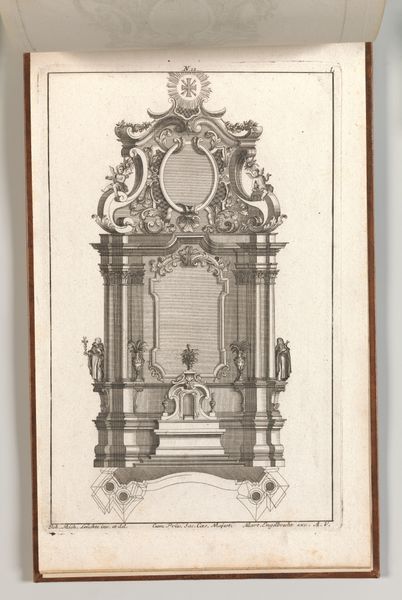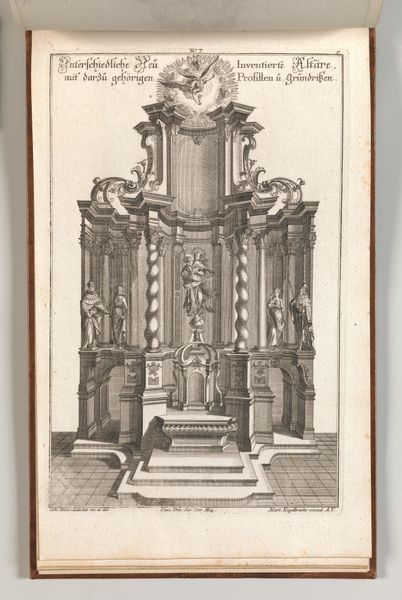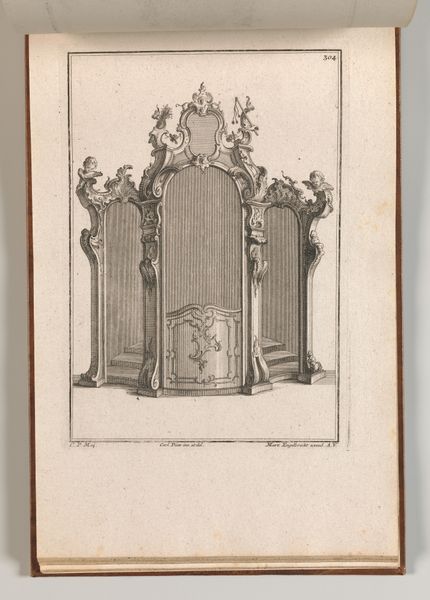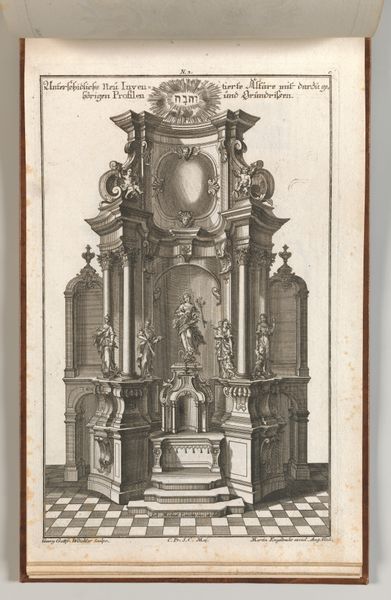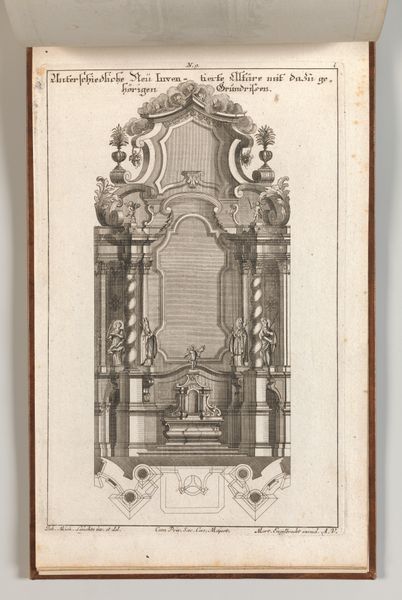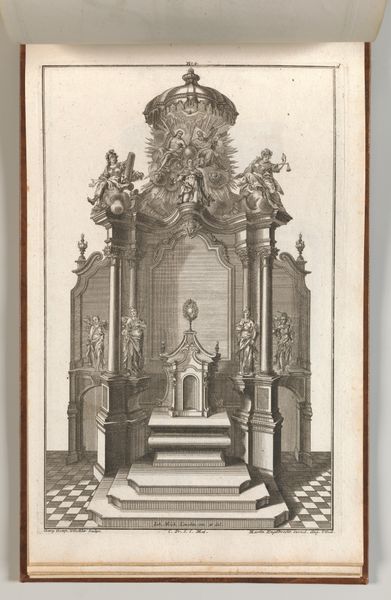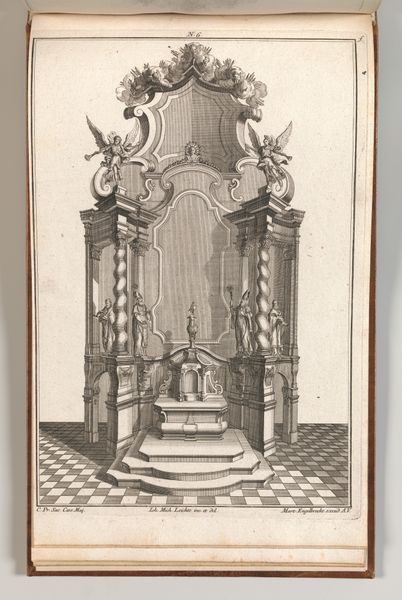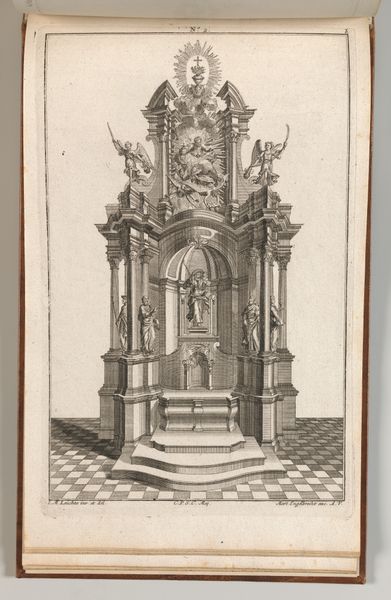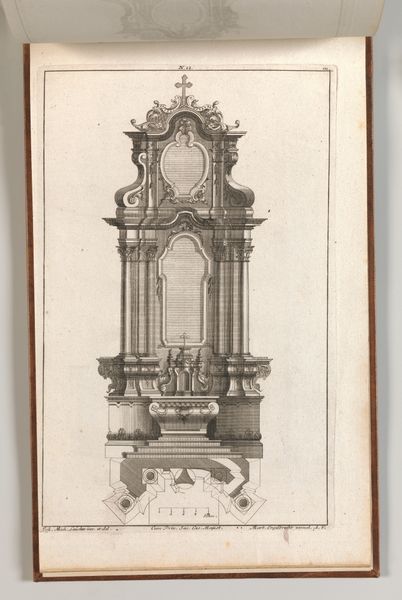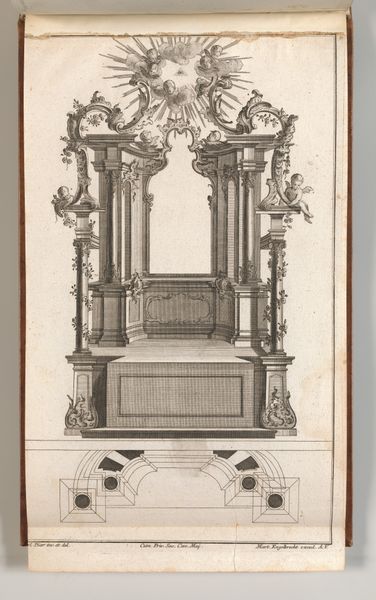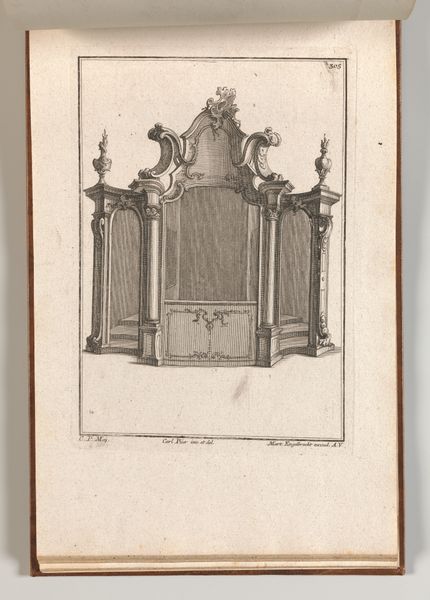
Design for a Monumental Altar, Plate h from 'Unterschiedliche Neu Inventierte Altäre mit darzu gehörigen Profillen u. Grundrißen.' 1745 - 1755
0:00
0:00
drawing, print, etching, engraving, architecture
#
pencil drawn
#
drawing
#
baroque
# print
#
etching
#
form
#
line
#
engraving
#
architecture
Dimensions: Overall: 8 7/16 × 13 3/4 in. (21.5 × 35 cm)
Copyright: Public Domain
Curator: This is "Design for a Monumental Altar," a print by Johann Michael Leüchte, created sometime between 1745 and 1755. It’s currently held here at the Met. Editor: Immediately, I’m struck by its stark, almost skeletal quality, despite the undeniably Baroque opulence. It feels incredibly architectural. Curator: Absolutely. As the title suggests, this piece functions as a design, and it's from a series. Leüchte was imagining, on paper, elaborate altar constructions. Look closely; you’ll see the lines of the engraving and etching, emphasizing the proposed materials - marble, perhaps some gilding. What sort of labor would it require? Editor: That’s a crucial point. And given the era, thinking about the religious and social implications is vital. Who would commission such a piece? What statements of power are being embedded in the very fabric of the design? A space for whom? Curator: Precisely. The patronage system drove so much artistic production. Leüchte likely intended for this to appeal to wealthy church officials or aristocratic families looking to showcase their piety—and their power—through extravagant displays. Editor: We also can't ignore how gender dynamics would factor into how sacred spaces would be structured at the time. Where men and women could or could not worship together or partake in specific roles. Looking at this design, it could potentially allow, enable, and perpetuate very gendered hierarchies within these communities. Curator: Very astute. The physicality of the labor also intrigues me. This kind of intense detailing, the carving, the transport, not only requires enormous skill, but reveals much about class divisions and material constraints within this period. These are very gendered labors, too. Editor: Seeing the altar presented almost like a stage or theater set makes me question how accessible devotion would have truly been for all members of the population at this moment in time. This certainly caters towards a very specific gaze. Curator: Indeed. Thinking about the distribution of the prints themselves gives another glimpse into this era. This book would act as both a commercial object and an indication of artistic possibilities, shaping future designs and material practices. Editor: Exactly! So much is at stake beyond the aesthetic experience. Hopefully, reflecting upon this proposed architectural design makes us all more conscious about our physical realities, our systems of oppression, and our values, past and present. Curator: I couldn't agree more. Looking closer reveals that artworks from the 18th century also encourage reflection on the dynamics that permeate art today: consumption, accessibility, labor and social justice.
Comments
No comments
Be the first to comment and join the conversation on the ultimate creative platform.
